What do Junkers-88 and F-35 have in common?
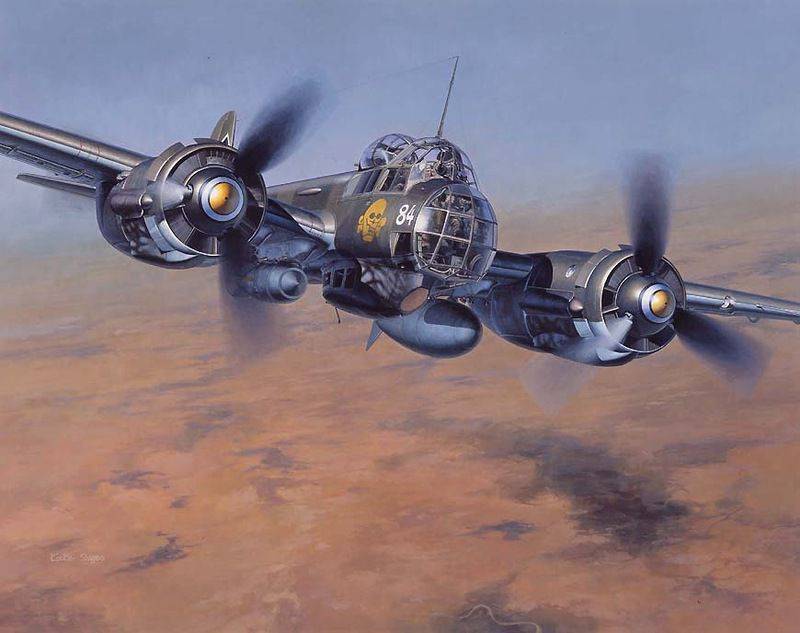
History Junkers
Ju-88A-4, wingspan - 20,08 m, take-off weight - 12 tons.
But is such a story worthy of the most sinister front bomber?
Maybe we should start like this:
Junkers fall sedately
On the wing in the coup,
Hopeless howl sad
Heralds the death of the infantry.
Yes, it was a formidable plane. The length and span of his wing can be easily found in reference books. But who will answer: how did the Junkers differ from others? And why did our soldiers hate him so much?
The main combat quality of Ju.88 was not speed (Mosquito flew faster), bombing accuracy (nothing compares to Stuck), combat load (standard for all planes of its purpose), non-defensive armament (compare TTX of the supplied under the Lend-lease A-20 “Boston”), not combat survivability (the Tu-2 flight from Omsk to Moscow on one engine: the Ju.88 pilots did not dream of that). And even none of the combinations of the listed parameters.
The main advantage of the “Junkers” was a four-meter “hole” in the fuselage. In other words, an unexpectedly large bomb bay for an ordinary front-line bomber.
So what's the problem? Did not others have?
The answer is no. A bomb hole is not just a hole of arbitrary size, covered with sliding doors. This is a place of weakening the power set, in the most heavily loaded place of the fuselage. And the bigger this “hole” is, the more chances the plane has to fall apart in the air.
German engineers were able to construct a sufficiently strong structure that allowed such constructive “nuances”.
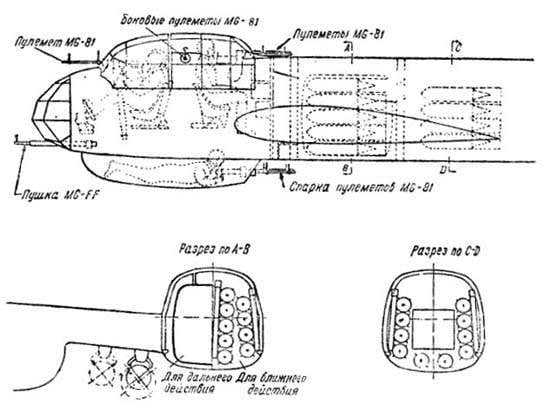
Two bomb compartments, which, if desired, turned into one grand pantheon of death.
But this is only half the story. After all, mass and volume are independent parameters.
The Ju.88 combat load mass was standard for its “weight category” (2 tons with take-off weight 12 t). In such a situation, the size of the Ju.88 bomb bay would not matter without one important and little-known detail.
“Junkers” exclusively corresponded to the concept of the use of the Luftwaffe. The Germans did not have “weave” bombs like the Soviet FAB-100. The economical descendants of the Aryans, not without reason, believed that to destroy most targets in the front-line and on the battlefield, the power of the 50-kg bombs was sufficient. Equivalent to 152-mm howitzer projectile with twice the content of explosives. The next caliber after SC.50 was immediately SC.250 (in the jargon - “Ursel”) for more serious tasks.
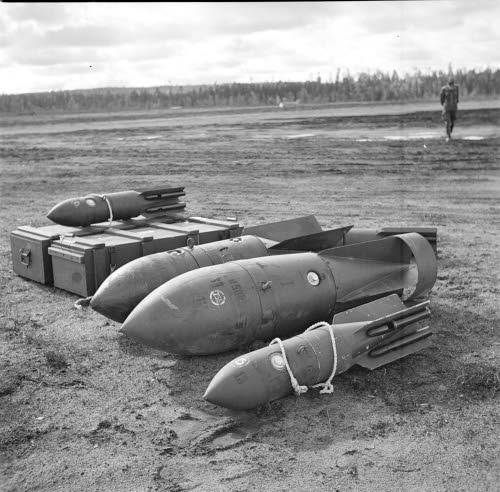
As a result, the huge “Junkers” bomb bay, according to the standard, was loaded twenty eight 50-kg "hotels" for the enemy infantry. A couple of “Ursel” Germans usually cling to the external holders, for more significant purposes.
As a result, Ju.88 could in one go “Cut out” several times more dispersed targets (manpower and technology) than other front-line bombers of that era.
If necessary, ammunition of other power was placed in its spacious womb - everything up to SC.1800 with the characteristic nickname Satan.
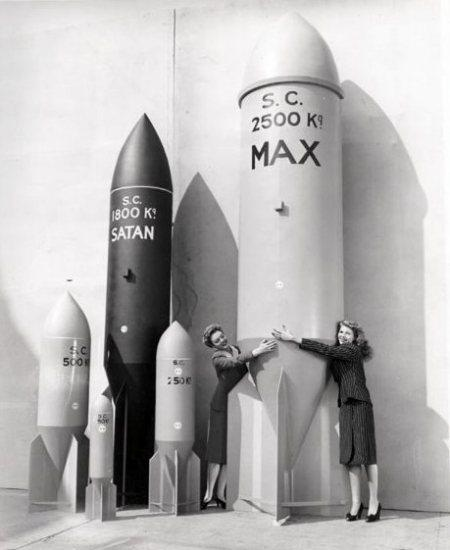
Another less significant, but also an unpleasant surprise was the method of bombing. The Germans not only created a roomy aircraft, but also taught him dive bombing. It is easy to imagine what kind of loads could withstand the remnants of the power set; what remains after the cut-out for a hole the length of a third of the fuselage.
Ju.88 was not an analogue of the legendary “Stucky”, it could attack only at limited dive angles (in theory - to 70 °). By the way, that one did not have a bomb bay at all - only the strongest power set and external bomb racks. Therefore, the Ju.87 dived almost vertically, leaving the peak with an overload of six or more “same”.
In diving 88-th also used bombs exclusively with external suspension. The Junkers did not have a mechanism for removing them outside the bomb bay (similar to the Soviet bomb ram PB-3).
In any case, all this increased the flexibility of application and increased the already high combat capabilities of Ju.88.
In addition, the semi-dive bomber was equipped with a highly sophisticated automatic for its time, allowing the crew to focus on aiming at the time of the bombing. “Junkers” automatically entered into a dive after the release of air brakes and also independently left it after dropping bombs. The automatic machine set the required mode of operation of the engines and, controlling the current overload, set the optimal curvature of the trajectory when leaving the attack.
“In!” - the finished Germanophiles and all those who are used to praise the fascist scientific genius will lift their thumbs up. Flying "Mercedes", automatics. We, Russian Vanka, do not grow to this.
And they will be wrong.
But more about this will be slightly lower.
Let us summarize what has been said.
Junkers-88 front bomber became effective weapons only thanks to the 50-kg bombs, selected as the main caliber of the Luftwaffe. In other conditions, the dimensions of the bomb compartments and bombs Ju.88 would not have significant value, because, I repeat, the weight of the combat load still remained at the level of other aircraft. And the other benefits of “Junkers” did not have.
What is this - a brilliant calculation of the Teutonic engineers? Hardly. Rather, just a coincidence. It is enough to remember the creation story and initial purpose this plane.
Born in the framework of the creation of a high-speed bomber (“shnell-bomber”), Yu-88 failed the expectations of the Luftwafli command. “Junkers” never possessed any outstanding speed qualities and did not meet customer requirements.
During the first tests of the prototype, it was possible to achieve the speed of 580 km / h. But as soon as it came to the series, the speed suddenly dropped to 100 km / h.

As a result, the Germans didn’t succeed in a “snell-bomber”. “Junkers” could not act in a combat situation, relying only on their speed qualities. Like other bombers, they needed defensive weapons and mandatory fighter cover.
Finally, the “shnell-bomber” could not be a normal dive bomber. It is excluded. For high-speed aircraft is characterized by a streamlined appearance. For a dive bomber, bad aerodynamics and maximum air resistance are required. Otherwise, it will accelerate too fast in a dive, so fast that the pilot will not have time to aim. It is no coincidence that the Ju.87 (“bast”, “piece”) had such a monstrous appearance with bulky chassis fairings. Do you think the Germans could not create a mechanism for cleaning the chassis? They did it on purpose.
The only ones who managed to build a real “shnell-bomber” were the British with their amazing “Mosquito”.
Less than 200 downed aircraft of this type (out of thousands of units released from 7,8). 97% lossless combat missions. Not bad for a wooden plane, devoid of any defensive weapons. High-speed reconnaissance bombers bombed and photographed the cities of Vaterland, without paying any attention to the aces of the Luftwaffe. Without any cover, they conducted reconnaissance over the industrial areas of the Ruhr, the Tirpitz site, and carried out courier transportation in the sky of Berlin (Moscow-London air bridge).
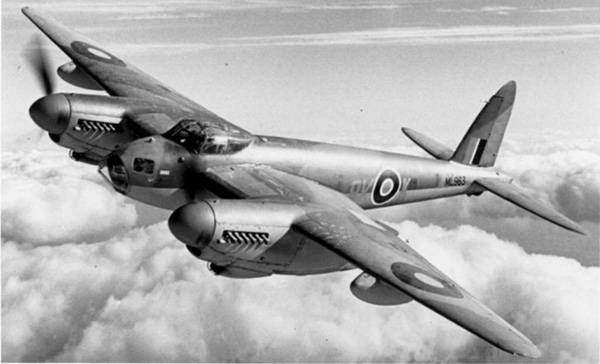
The very idea of “shnell-bomber” originated due to the weakness of piston (and first jet) engines, in which the fighters did not have a noticeable advantage over a well-constructed bomber. The best thrust-to-weight ratio of the fighter was leveled by air resistance.
A bomber flying in a straight line could have a higher wing load (a relatively small wing compared to the size of the aircraft).
The concept of a fighter demanded the opposite. Fighters must maneuver and be able to fight each other. The less kilograms falls on each square. meter wing, the easier the wing "deploy" the aircraft. Smaller turn radius. Higher maneuverability.
“How are the wings and turns connected?” - the youngest of the readers will ask.
Airplanes change the direction of flight by creating a roll in one direction or another (the work of the ailerons). As a result, the lift decreases on the “lower” wing and increases on the raised wing. This creates a moment of power, which unfolds the aircraft.
However, we are very enthusiastic about aerodynamics. In practice, everything looked the obvious way. The creators of "Moskit" managed to build a bomber, flying faster fighters. And the creators of “Junkers” - no.
Here it is - level. Shadow Teutonic genius. Unrivaled German technology.
The speed shortage is not the last problem of Ju.88.
On the posters "Junkers" menacingly bristled with trunks in all directions. What is the reality? The number of machine guns was twice the number of crew members.
Not everyone has the art of reading subtle hints. If there are more machine guns than shooters, then only some of them can fire at a time.
As soon as the enemy fighter left the shooting zone, the “Junkers” arrow needed to roll over on the other side, make the next machine gun for firing and again catch the enemy in the sight. The problem is still the same, given the tightness of the cabin and the bulkiness of flight uniforms.
It is clear that Ju.88 is not an American “Super Fortress” with automatic remote turrets. But even with the usual turret installations, the German geniuses did not get along.
Just as affected by the lack of designers Shpitalnogo and Komaritsky, who designed the most rapid-fire aviation machine gun rifle caliber. In terms of fire density, the German MG-15 and MG-81 are never the Soviet ShKAS.
Another characteristic flaw is the layout of the Ju.88. In an effort to save space, the Germans placed the entire crew in a single, too compact cabin, on each other’s heads. Motivating the opportunity to replace the wounded member of the crew.
In practice, an anti-aircraft shell that exploded near killed the entire crew on the spot. And because of this arrangement, the arrows experienced problems with the control of the rear hemisphere. The tail point of fire at the “Junkers” was not available.
Life at the shooters Ju.88 was like a mockery. The one who had to follow the lower hemisphere, the whole flight was writhing on the bench, under the pilot's legs. He crawled to his machine gun only when an enemy appeared.
Despite the protection of the fuel tanks and the duplication of all the oil and gas systems, the combat survivability of the Ju.88 looked doubtful. A drill pilot of average qualification had almost no chance to bring a damaged aircraft on one engine. “Junkers” obstinately turned and pulled to the ground. In this case, the motors themselves had no protection.
Yes, this is not the Tu-2, which flew on one engine as if in normal mode (a record flight from Omsk to Moscow).
The most massive Luftwaffe bomber was mediocre in everything. The only thing he could do better than others was to throw small caliber bombs. Better than him, only the devil himself could.
And if necessary, could hit and 1000-kg “Gerda”, and almost two-ton “Satan”.
Ultimately The widest range of bomb weapons and the combat flexibility of the Ju.88 proved to be the most valuable quality in front conditions.
Vanka
As of 1941, the year in the Soviet Union was a front-line bomber, on which (attention) an automatic flight system was also installed, which controlled the aircraft at the time of the attack.
Mysterious and legendary Ap 2.
Soviet designers went their own way. Instead of many small “mines” - the accuracy of the strike. As a result despite being smaller, the Ap 2 could have dropped twice the combat load in a divethan Ju.88. All this thanks to the bomb-holder PB-3, which took the bombs out of the bomb bay when diving to the target.
Ease of piloting - easy to learn for wartime sergeants. And these were not simple words. In the regiments flying on the Pe-2, 30% of the aircraft were constantly inefficient due to the broken landing gear.
The design is unified with the SB bomber. Redesigned were the nose of the fuselage and propeller group.
Unavoidable flaws, like any other technology. A matter of time and continuous improvement in design. The path along which all the famous aircraft.
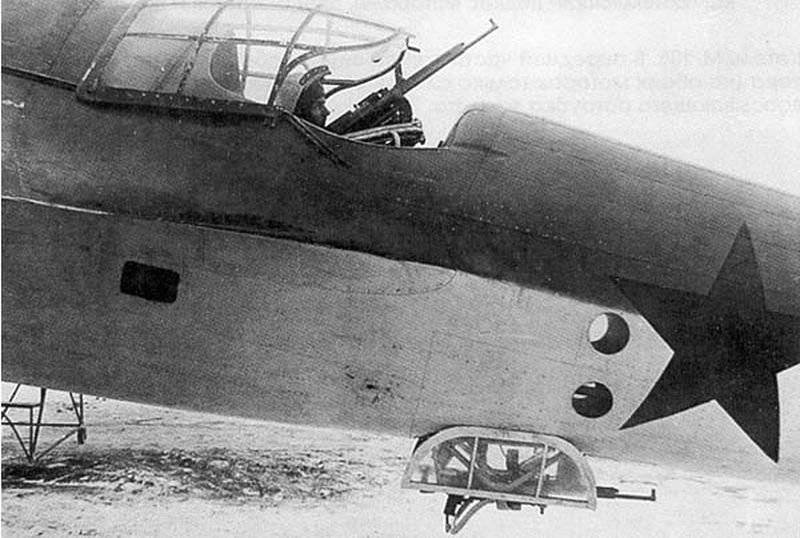
Art-2, masterpiece aircraft. The team of the Arkhangelsk Design Bureau is the undisputed winner of the Constructors' Championship on the eve of the war.
On June 1, 1941, as part of the Red Army Air Force, there was already an 164 combat-capable bomber of this type. Why was the serial production of the AR-2 in favor of the more complex and less efficient Pe-2? There is no clear answer to this day. Historians agree that the Ap 2 interrupted its flight due to the lack of a clear concept of the use of the KA Air Force.
But most importantly - they could. The plane, constructively superior to its “classmate”, was a German front-line bomber Ju.88.
Conceptual successor of “Junkers”
Seven decades later, on the path, beaten Yu-88, is the next plane. F-35 “Lightning”.
The analogy is obvious. See:
Like the failed fascist “shnell-bomber”, the modern “Lightning” counts on one, promising, in theory, direction. Only this time, instead of speed, stealth.
And once again, the concept fails. One selected quality is not enough for independent action in a combat situation.
Like the “Junkers-88”, the new combat aircraft is the object of the most severe criticism. Experts describe many flaws and question the flight performance of the F-35, assessing them at best as “moderate”.
Among the positive qualities are the flight and aim complex of the new generation, full automation of the aircraft. The pilot was able to focus on aiming and target selection in battle. All other parameters and systems of the F-35 are controlled by 8 with millions of lines of program code.
After all, it is also a reference to the ideas embodied in the construction of Ju.88. The pilot released air brakes, then “Junkers” understood everything without words. The action algorithm for the attack mode was launched. The crew remained only to fly to the ground, remembering all the saints, holding the crosshair on the selected target.
But this is too little for successful actions in a combat situation.
The creators of the F-35 could not even know about the German “Junkers”. In technical terms, there is no connection between them (and there can not be). But the ideas that Americans use are confirmed by the Luftwaffe combat experience.
A combat aircraft is a structural element of the armed forces and the military-industrial complex as a whole. It can not be considered without taking into account the characteristics of its weapons.
Like Ju.88, the new “Lightning” surpasses all existing multi-role fighters in the number and variety of combinations of weapons (and in their use at the expense of advanced sighting tools). The F-35 project integrates almost all NATO aircraft munitions to destroy aerial, land and sea targets.
Finally, the amount. The Germans, realizing the military value of the Yu-88, built during the war years 15 thousands of bombers of this type. Luftwaffe “workhorse” The most massive bomber in history.
Americans with rare persistence solve the “Lightning” problems and go to the stated goal - to equip the Air Force with a single (main) type of multi-purpose aircraft. As a result, today the F-35 is becoming the most popular fighter of the 5 generation.
In this sense, it is much easier for them. All new solutions are first studied in the form of computer models. The Germans did not have computers; as a result, all the first 10 pre-series Ju.88 were defeated in plane crashes.
As you may have guessed, this article is not a story about any particular type of aircraft. This is just an attempt to rethink some well-known facts in the field of military aviation and to understand why the simple often seems difficult and difficult, on the contrary, simple.
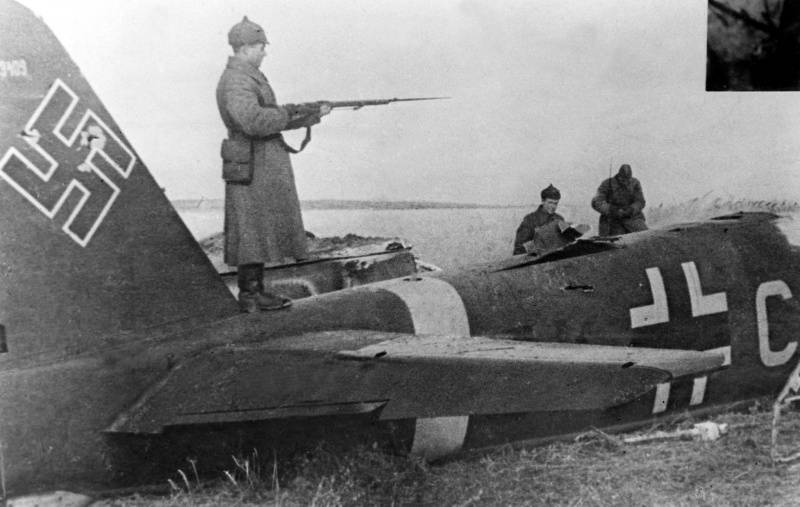
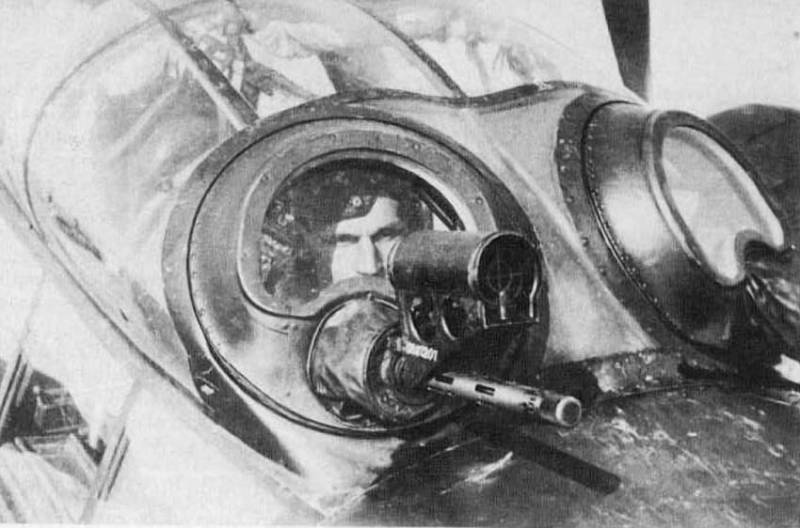

Information